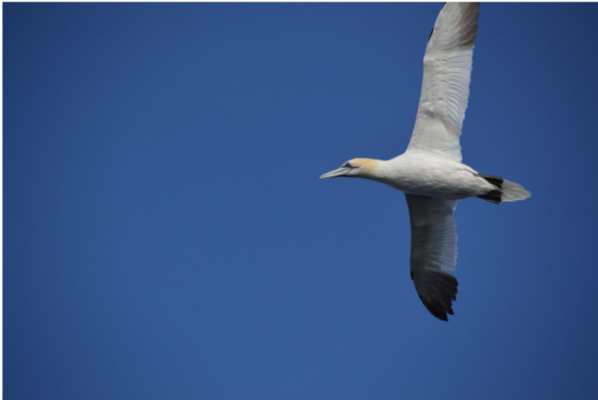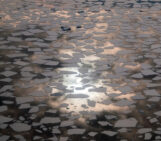
I am a hobby ornithologist and love watching birds. It is fun and relaxing to search the trees or fields for feathered friends. One has to be aware of their surroundings, which can make birding even meditative. Here, I will tell you more about Arctic breeding birds, their population declines and I present to you three birds of the many I saw on my very first trips to the Arctic.
Arctic breeding birds
Birds live everywhere around the world, on all seven continents. This is possible because birds were able to adapt to extremely different environmental conditions and habitats. In the Arctic, we can find different breeding birds than in other regions. Most of these birds migrate from the Arctic to warmer regions for the winter and have often very long migratory routes. The all-time champion is the Arctic tern. Every year, this bird flies from the Arctic to the Antarctic, a journey of about 30,000 kilometers that they complete in a couple of months. Many Arctic breeding birds are experiencing population declines due to rapid environmental changes in the Arctic as well as along migratory routes (see this video). According to the Arctic Migratory Birds Initiative from the Arctic Council, such changes include climate change, pollution, shipping, fishing, infrastructure development, habitat loss and harvest. This initiative aims to monitor Arctic migratory birds to better understand the population declines, but also to for example monitor plastic distribution in the Arctic, another important environmental concern (see this video).
Here are the three birds I want to tell you about!
Northern Gannet (Morus bassanus)
This large seabird breeds in colonies on steep rock slopes in the North-Atlantic Ocean. You can find them along the coast in Great Britain and Ireland, Iceland, Germany and Norway. You can see one in the opening image. I took that shot on a boat trip to a little rocky island in the northern part of the Lofoten, an archipelago in Norway, in Summer 2014. They make spectacular dives to catch fish where they can drop down diagonally from 40 m high and their wings spread (their wingspan reaches almost 2 m!) only to fold them together at the last second before touching the water.
Bohemian Waxwing (Bombycilla garrulus)
This wonderful bird breeds in the sub-Arctic, in the northern part of the taiga forests. I met this individual in Spring 2015 during a 4-day field trip to Kiruna, Sweden, as part of the course “Arctic Science” hosted by the University of Umeå. The waxwing is very beautiful (see second photo): he has a big crest, a dark mask, bright yellow and red on the wings; a rather exotic bird! Fun fact: they love to eat berries (see the photos), but as these are often partly fermented in winter, they get drunk eating them and sometimes cannot fly for a little while (see this video)!
Snow bunting (Plectrophenax nivalis)
This little guy (18 cm large) is a snow bunting and one of the the only songbirds in the archipelago Svalbard, Norway, where I found him in late Spring 2016. Buntings spend a lot of time on the ground where they find nice seeds to eat with their thick beak. The snow bunting often breeds in the tundra. He makes short flute-like and twittering sounds (watch and listen here). The one on the photo is showing off his colored rings around his legs, which are used in bird migratory research. They are not shy and very restless.
The birds I showed you are just a few examples of an amazing range of birds that live in the Arctic. Some have rather camouflage colors (for example the rock ptarmigan or the purple sandpiper) whereas others have bright colors to stand out (check out the king eider!). The Arctic is often thought of as icy and white, cold and bare. But it is the home to many beautiful and interesting organisms, giving the Arctic (and the Antarctic too) a lot of color!
Edited by Giovanni Baccolo
 Loeka Jongejans just received her doctoral degree in geosciences at the University of Potsdam and the Alfred Wegener Institute, Potsdam, Germany. She researched the greenhouse gas potential from permafrost sediments following permafrost thaw. For this, she went on field expeditions to the Russian Arctic and analyzed sediment samples in biochemical laboratories. She likes science communication such as organizing science events for school kids and students, and writing science poems. Loeka is one of the chief editors of the EGU_Cryosphere blog. She tweets as @JongejansLoeka. Contact email: loeka.jongejans@live.nl
Loeka Jongejans just received her doctoral degree in geosciences at the University of Potsdam and the Alfred Wegener Institute, Potsdam, Germany. She researched the greenhouse gas potential from permafrost sediments following permafrost thaw. For this, she went on field expeditions to the Russian Arctic and analyzed sediment samples in biochemical laboratories. She likes science communication such as organizing science events for school kids and students, and writing science poems. Loeka is one of the chief editors of the EGU_Cryosphere blog. She tweets as @JongejansLoeka. Contact email: loeka.jongejans@live.nl







